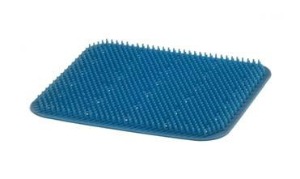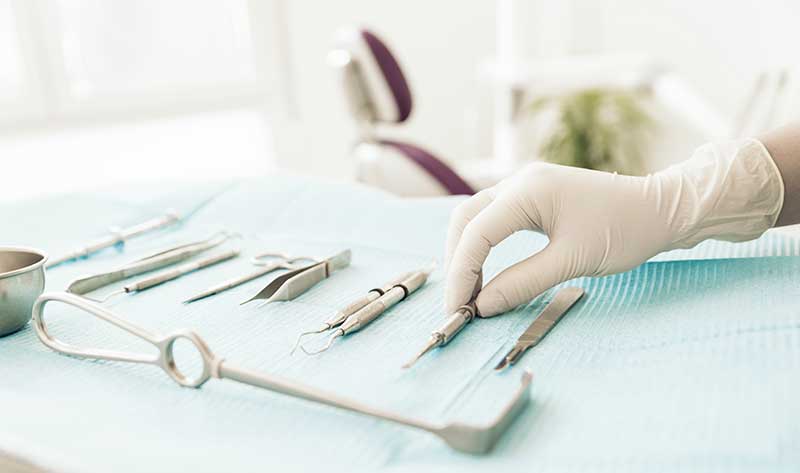Posts Tagged ‘surgical instrument cleaner’
Ultrasonic Cleaner for Dental Instruments
Using an ultrasonic cleaner for dental instruments is a recommend practice cited by professional organizations including the American Dental Association, the Food and Drug Administration and the CDC’sSummary of Infection Prevention Practices in Dental Settingsto remove contaminants from reusable dental instruments.
Clinics employ ultrasonic cleaners for dental instruments before sterilization to avoid heat “baking on” blood, tissue and other organic residues that cause infection problems. Dental instrument ultrasonic cleaning systems are also ideal for cleaning molds, implant hybrid prosthesis, and removing plaster and cement from bridgework.
Why Clinics Need an Ultrasonic Cleaner for Dental Instruments
Ultrasonic energy creates billions of minute vacuum bubbles in an ultrasonic cleaning bath that implode with tremendous force when they contact dental instruments.
The process, called cavitation, reaches into tiny cracks and crevices, quickly and safely blasting loose and carrying away contaminants on dental instrument surfaces. Dental instrument ultrasonic cleaners are faster, … Read the rest
Deionized Water Rinsing after Ultrasonic Cleaning
We’ll start this post by stating that it is not always necessary to rinse products after ultrasonic cleaning. Engine parts such as gears and carburetors are examples where cleaning solution residues may be tolerable. If not, then rinsing cleaned parts with fresh water should usually suffice. There are other areas, however, where thorough rinsing is essential and where deionized water rinsing after ultrasonic cleaning is strongly recommended.
These are applications where the slightest bit of remaining contaminants or cleaning solution residues can impact performance. Electronic components such as printed circuit boards, optics, and medical and surgical instruments, are examples. These are applications where spot-free drying is the goal, and in this context “spots” relate to dissolved minerals in regular water that remain as residues when the water evaporates.
Removing dissolved minerals in water is generally accomplished by two methods. Deionization is a process that produces deionized water (DI water) by … Read the rest
Ultrasonic Cleaning Delicate Surgical Instruments

Ultrasonic cavitation is a proven technique for removing contaminants from surgical instruments prior to disinfecting or sterilizing steps. This is accomplished in an ultrasonic cleaner when microscopic bubbles created by the unit’s ultrasonic transducers implode on contact with surgical tools. The process effectively strips away blood, tissue and other deposits resulting from surgical procedures.
Balancing Ultrasonic Cleaner Frequency with Cleaning Effectiveness
Higher frequency ultrasonic cleaners operating at 80 to 130 kHz are often used for delicate or highly polished parts in order to avoid potential damage caused by the imploding bubbles. Higher frequencies equate to smaller bubbles, which while safe for delicate parts are less effective in removing gross contaminants associated with microsurgery instruments. Instead, an ultrasonic cleaner operating at 37 kHz such as the Elmasonic Select series available from Tovatech is generally recommended for surgical instrument cleaning.
There are, however, instances … Read the rest
Ultrasonic Cleaners for Medical & Surgical Instruments
Medical and surgical instruments in a variety of sizes and complexity can pose challenges when it comes to cleaning, disinfecting and sterilizing them after use. An ultrasonic cleaner is an ideal tool for the first step in this three step process to protect medical personnel and patients from possible infection due to pathogens that remain on the instruments after a procedure.
The Ultrasonic Principle
Ultrasonic cleaners work on the principle of cavitation whereby ultrasonic transducers create billions of minute air bubbles in an ultrasonic cleaning solution. These implode with violent force when they come in contact with objects placed in the solution and strip away contaminants without damaging the objects. When medical and surgical instruments are properly prepared for the ultrasonic cleaning step the process is fast, thorough and efficient.
Pre-prep is important, according to the Association of PeriOperative Registered Nurses (AORN) Recommended Practices Committee, which states that “initial instrument … Read the rest

